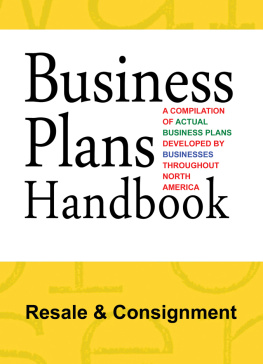TABLE OF CONTENTS
Guide
Drama for Students, Volume 23
Project Editor: Sara Constantakis
Editorial: Anne Marie Hacht, Ira Mark Milne
Rights Acquisition and Management: Lisa Kincade, Timothy Sisler
Manufacturing: Drew Kalasky
Imaging: Lezlie Light, Mike Logusz, Kelly A. Quin
Product Design: Pamela A. E. Galbreath
Product Manager: Meggin Condino
2006 Gale, a part of the Cengage Learning Inc.
Cengage and Burst Logo are trademarks and Gale is a registered trademark used herein under license.
For more information, contact
Gale, an imprint of Cengage Learning
27500 Drake Rd.
Farmington Hills, MI 48331-3535
Or you can visit our Internet site at
http://www.gale.com
ALL RIGHTS RESERVED
No part of this work covered by the copyright hereon may be reproduced or used in any form or by any meansgraphic, electronic, or mechanical, including photocopying, recording, taping, Web distribution, or information storage retrieval systemswithout the written permission of the publisher.
For permission to use material from this product, submit your request via Web at http://www.gale-edit.com/permissions, or you may download our Permissions Request form and submit your request by fax or mail to:
Permissions Department
Gale, an imprint of Cengage Learning
27500 Drake Rd.
Farmington Hills, MI 48331-3535
Permissions Hotline:
248-699-8006 or 800-877-4253, ext. 8006
Fax: 248-699-8074 or 800-762-4058
Since this page cannot legibly accommodate all copyright notices, the acknowledgments constitute an extension of the copyright notice.
While every effort has been made to ensure the reliability of the information presented in this publication, Gale, an imprint of Cengage Learning does not guarantee the accuracy of the data contained herein. Gale, an imprint of Cengage Learning accepts no payment for listing; and inclusion in the publication of any organization, agency, institution, publication, service, or individual does not imply endorsement of the editors or publisher. Errors brought to the attention of the publisher and verified to the satisfaction of the publisher will be corrected in future editions.
ISBN 0-7876-8119-9
ISSN 1094-9232
Printed in the United States of America
10 9 8 7 6 5 4 3 2 1
I Am My Own Wife
Doug Wright
2003
Introduction
I Am My Own Wife was the first one-person show ever to win a Pulitzer Prize, which it did in 2004. The main character of Doug Wright's award-winning play is a German transvestite, who goes on to become a celebrity in his/her own right, to the point of being declared by some a national German hero. The play was published in 2004 by Faber and Faber. Wright, who is included in the more than forty characters portrayed (by one man), went to Germany in 1993 to meet and record conversations with the real Charlotte von Mahlsdorf (born Lothar Berfelde), upon whose life the play is based. The playwright struggled for several years after meeting with Charlotte, trying to conceptualize how to turn the material he had into a play. There were so many different facets of Charlotte's life, including some that were not very flatteringamong them, news stories that confirmed that Charlotte had been a Nazi spy.
Wright called together two of his closest friends and brainstormed with them. Those friends were Moiss Kaufman, an award-winning director who would go on to direct the play, and Jefferson Mays, who would astonish audiences with his versatility in acting out all forty or more characters and eventually capture his own award, the Tony. I Am My Own Wife tells a story that spans Charlotte's childhood in the 1930s through the erection (1961) and deconstruction (19891990) of the Berlin wall, which separated Communist-controlled East Berlin from West Berlin. Through the eyes of Charlotte, the audience gains a glimpse into life in Germany as it is transformed first by the Nazi regime and then by the bombings of the Allied Forces. The play opened off Broadway in May 2003 and moved to the Lyceum Theater on Broadway on December 3, 2003. It stayed on Broadway for almost a year and enjoyed 361 performances. As of the summer of 2005, it was still on national tour.
Author Biography
Doug Wright was born in Dallas, Texas, and it has been reported that, in 2005, he still spoke with a slight Texan twang. He received his bachelor's degree from Yale in 1985 and then went on to New York University, where he completed his master's degree in 1987. When Wright was interviewed by Gerard Raymond for the Advocate, after having won the Pulitzer Prize for I Am My Own Wife, Wright stated, "I keep calling my boyfriend every two hours and saying, 'I still have my Pulitzer!'" In fact, Wright's play won a long list of prizes that year, including the Tony Award for Best Play, the Drama Desk Award for Outstanding Play, the Outer Critics Circle Award, the Lucille Lortel Award, and the Drama League Award.
Wright should be used to winning prizes. He first captured an Obie for Outstanding Achievement in Playwriting and the Kesselring Award for Best American Play with Quills. This 2000 play focused on the subject of the Marquis de Sade and his time spent in prison. In this story, a friendly priest brings quills to Sade so that he can write. After the play was produced on the stage, Wright adapted this work as a screenplay. The movie version, which was Wright's motion picture debut, also won praise. It was given the Paul Selvin Award and received three Academy Award nominations. Other plays of Wright's include The Stonewater Rapture (1990), Watbanaland (1995), and Unwrap Your Candy (2001).
In the interview with Raymond, Wright talked about his attraction to Charlotte von Mahlsdorf, the subject of his Pulitzer Prize-winning play. Wright told Raymond that when he first met Charlotte, he thought of her as a mentor to him. She had survived so much more than Wright had. "I thought that all the negative conditioning I had endured as a young gay man growing up in Texas," Wright said, was offset by Charlotte's extraordinary experiences of survival. In the early 2000s, Wright was at work creating screenplays for Warner Brothers. When asked by one reporter if he would return to the stage, Wright answered in the affirmative. He claimed to have stored in one of his desk drawers enough material to keep him writing plays for a long time.
Plot Summary
Act 1
Wright's play, I Am My Own Wife opens in silence. Charlotte stares out at the audience, smiles slightly, and then disappears. The stage is empty for a short time before Charlotte reappears. She carries a large antique Edison phonograph, sets it down, admires it, and finally speaks. She proceeds to lecture the audience on the topic of the phonograph, giving a history of how it was developed and how it works.
Charlotte becomes quiet again; this time, when she speaks, she has been transformed into John Marks, the bureau chief of the Berlin office of U.S. News & World Report. John writes a letter (which is read) to Doug Wright, telling him of Charlotte. John changes into Doug, who is in Berlin with John and is talking into a tape recorder. The two men are heading toward Mahlsdorf, where Charlotte lives in East Berlin. On their way, they pass remnants of the Berlin wall, which has been torn down.





















